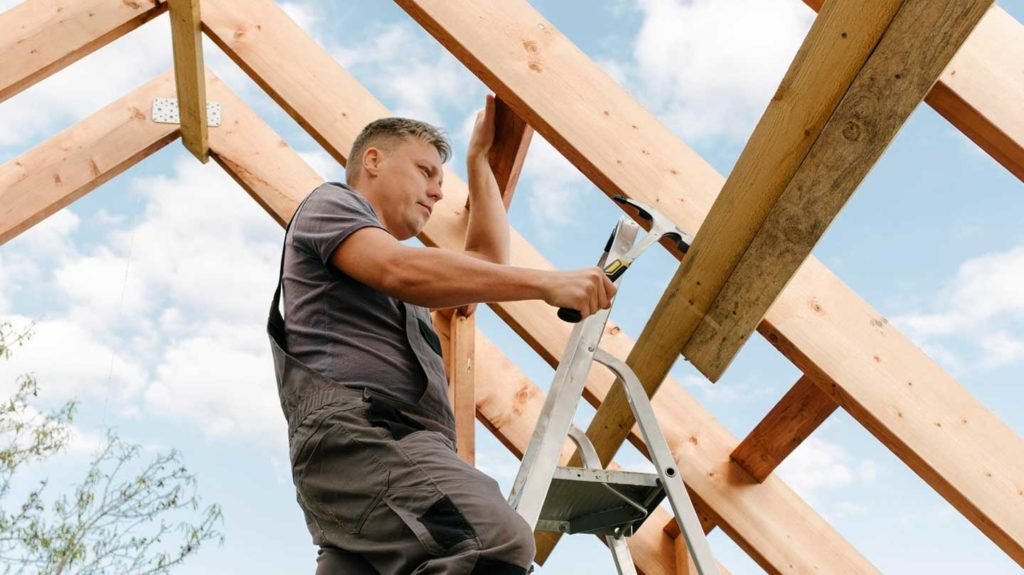It all begins with a sturdy and dependable roof structure. Those parts keep the roof in place, keep the elements out, and provide a solid foundation for the rest of the system. If you want your top to last, learning about trusses and rafters and properly distributing weight is necessary.
You can create a roof framing system by adhering to regulations and considering several factors. To better understand the relevance of roof framing, this article will examine its core concepts. Continue reading before you look for roofing near me.
The Purpose of Roof Framing

The primary roles of roof framing are to provide structural support for the roof and to distribute the roof’s weight to the walls. It plays a crucial role in ensuring the safety of a building’s framework. The top will sag, leak, and collapse without the proper structure.
The framework of a roof not only supports weight but also provides a surface for attaching insulation and other coverings. Their solid base can support the roof, insulation, and air circulation systems. A roof’s style may make or break a structure’s ability to withstand weather extremes, including wind, rain, snow, and heat.
Roof Trusses

The rafters of a building are its principal supporting framework. The frames are triangular, made from beams set at 90-degree angles. Trusses are constructed to distribute the roof’s weight uniformly throughout the structure, making it both strong and stable.
The brilliant triangular design of a truss is a wonder of architecture. Shifting the load from the truss’s apex to its bearing walls creates a more evenly distributed force. This structure can withstand considerable loads, including the roof’s weight, snow, and wind.
Trusses also allow for a great deal of customization and variety in appearance. They might be manufactured off-site to exacting standards, reducing costs and building time. Due to its versatility, roof trusses may be employed in various roof configurations.
Types of Roof Trusses
There are a few main types of roof trusses that are often used. Each kind was created particularly for various loads and various topographical situations.
Gable Trusses
Gable trusses, or pitched or peaked trusses, are the most often used. Like the letter A, they have two angled sides that form a triangle. Gable trusses can support various roofing materials without drooping, making them an excellent choice for flat roofs.
Hip Trusses
Hip trusses are often utilizing multi-slope roofs and other complex roof forms because of their distinctive four-sloping sides. Hip trusses have a variety of slopes that work together to distribute weight and increase the truss’s resistance to wind.
Gambrel Trusses
Gambrel trusses resemble barns because of their two sloping ends. You’ll often find them in traditional and rural dwellings. Gambrel trusses provide more height and space in the attic or upper level.
If you want properly designed and constructed roofs, being familiar with the many types of roof trusses available is important and you can get assistance from roofing near me.
Ridge Beam
A horizontal structural member that runs along the top of the trusses, the ridge beam supports and stabilizes the roof’s peak. The primary structural member binds the trusses together, preventing them from protruding at the top.
By distributing the weight of the trusses over the top, sagging and uneven tension are reduced to a minimum. Consider the span length, the total load, and the structural design before settling on a ridge beam.
The weight distribution on the roof determines the size and material of the ridge beam. If the ridge beam is not fitted correctly, the roof will collapse. Stability requires a firm connection to the trusses or walls underneath. For optimal performance, the ridge beam must be securely fastened to the trusses, which requires careful planning and execution.
Conclusion
A roof’s structure is essential in determining how long it will endure. Learning about trusses and rafters and properly distributing weight is necessary if you want your top to last. Whether you’re a do-it-yourself homeowner or a professional builder, understanding roof structure is crucial for a successful roofing project.
By adhering to regulations and considering several factors, you can create a roof framing system for your building that not only meets structural standards but also enhances its aesthetic.


